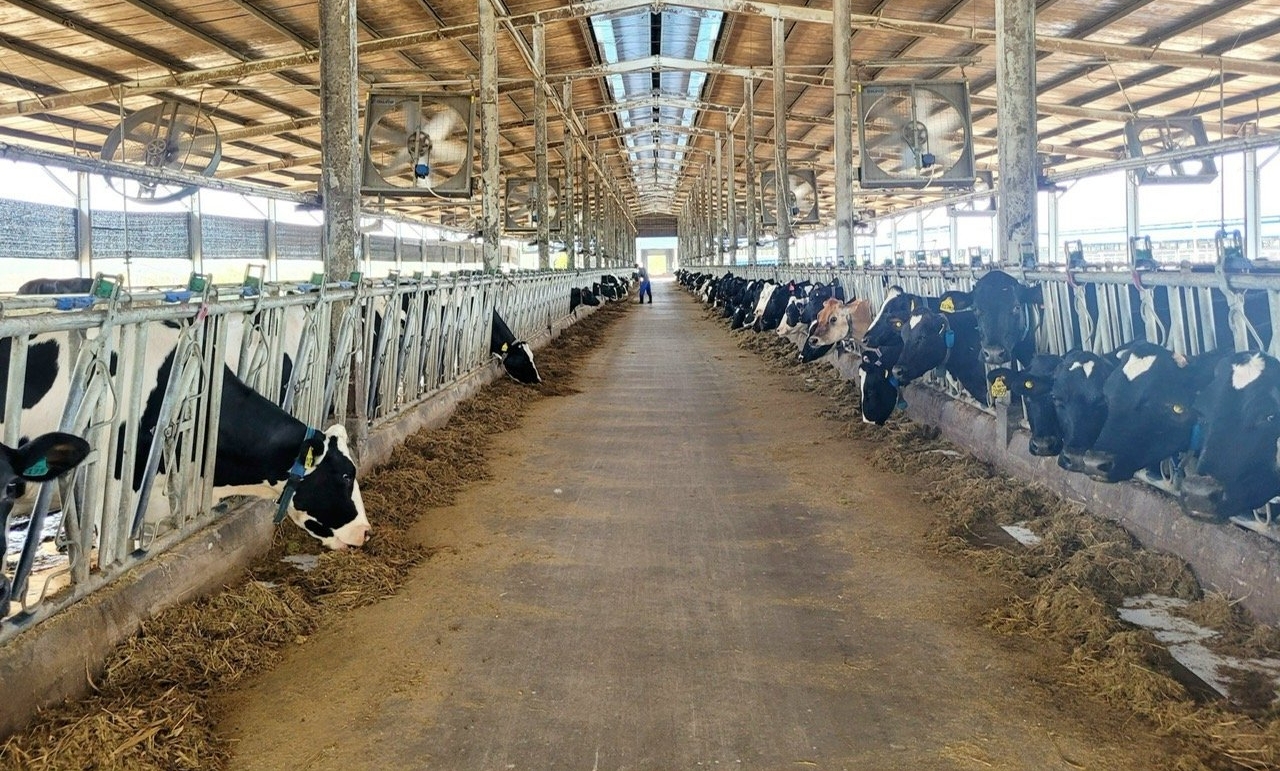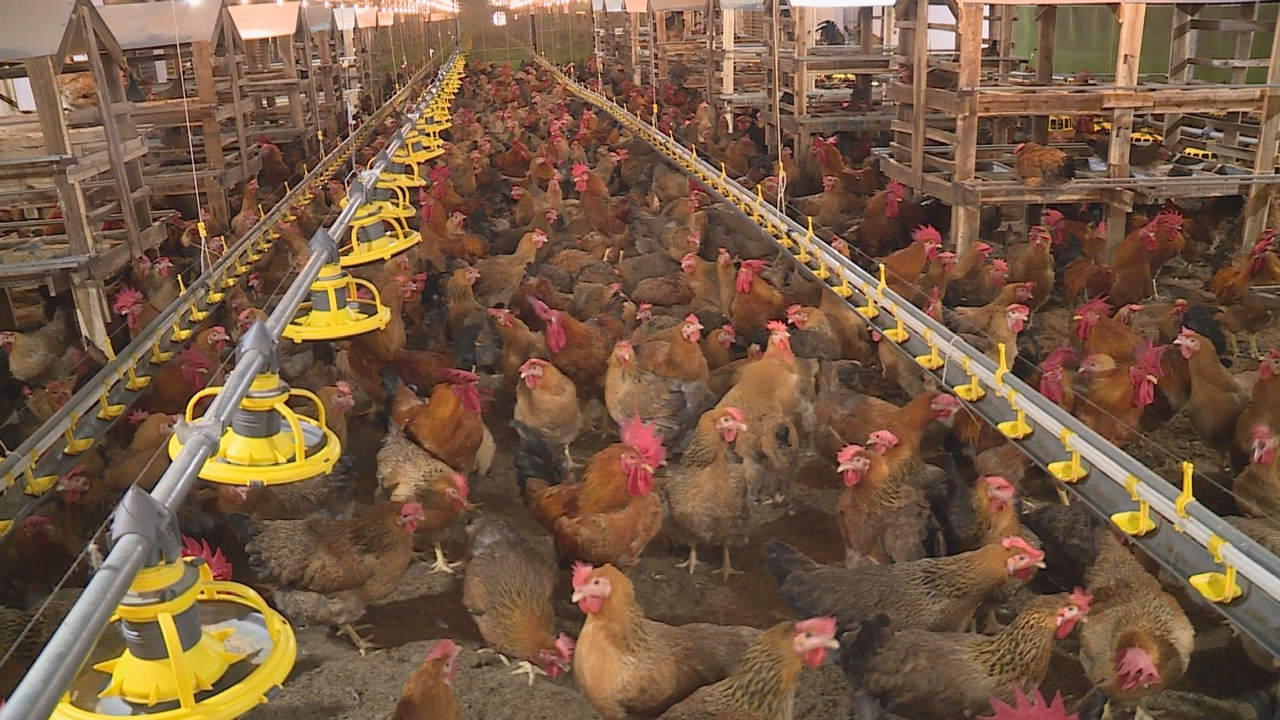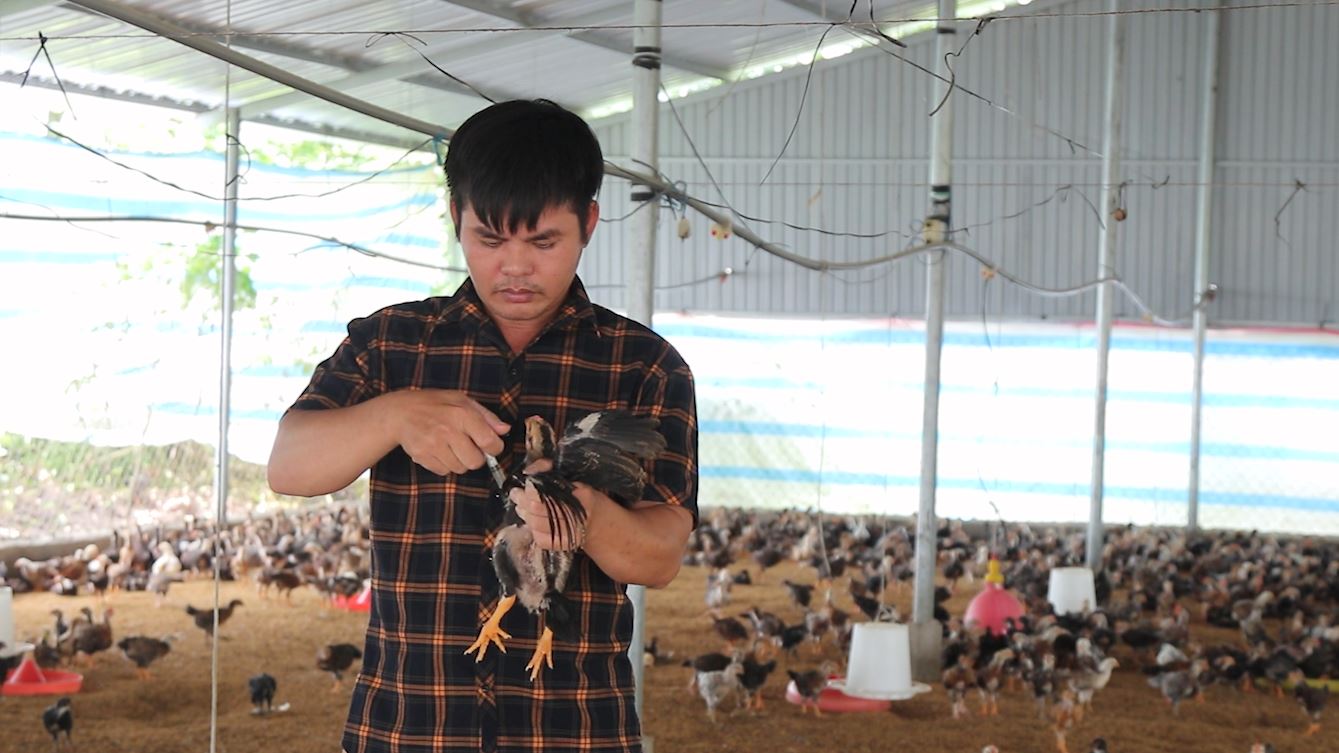October 16, 2025 | 13:01 GMT +7
October 16, 2025 | 13:01 GMT +7
Hotline: 0913.378.918
October 16, 2025 | 13:01 GMT +7
Hotline: 0913.378.918

The dairy farm of Anova Agri Binh Duong Joint Stock Company is considered a pioneering model in applying high technology to the livestock sector. Photo: Tran Trung.
As an agricultural district in the northeast of the province of Binh Duong, Phu Giao possesses a solid infrastructure and a modernized traffic system that facilitates the conveyance of input materials and the consumption of output goods.
In addition to open investment policies, flexible and easy-to-access high-tech agricultural development policies, stimulate the transformation and sustainable growth of agriculture in general and livestock production in particular.

People of Phu Giao district join hands with businesses raising processed chickens. Photo: Tran Trung.
In accordance with the VietGAHP standard, large-scale farms, agricultural households, and cooperatives have employed synchronized smart technology production measures.
Farms with cooling systems to help stabilize temperature and humidity, cages, automatic feeding lines, automatic water drinking, artificial insemination technology, sex separation, and environmental treatment with advanced technologies (CDM, biogas, biological mattresses, biological products...) are becoming more prevalent along the entire value chain, from research and breeding to production organization, farming, processing, and preservation.
There are currently 153 concentrated livestock farms in the entire district of Phu Giao, with up to 145 farms employing advanced technology and processes for corporations such as C.P. Vietnam, Emivest, CJ Vina Agri, and Japfa Comfeed, among others.

Farmers proactively take measures to prevent diseases for their livestock. Photo: Tran Trung.
The implementation of high-tech livestock models reduces labor and time for employees while improving accuracy, and working speed, and optimizing costs in accordance with the "all in - all out" principle to ensure biosafety.
Numerous plantations generate tens of billions of dong and employ hundreds of locals. It can be affirmed that these models have also contributed significantly to the change in the appearance of rural Phu Giao.
According to Mr. Doan Van Dong, Chairman of the Phu Giao District People's Committee, along with economic and social development, Phu Giao has focused on the development of agricultural production, particularly high-tech agriculture, in recent years. Consider this a crucial step towards achieving a triumph and laying the groundwork for contemporary and sustainable urban agriculture.
After four years of implementing a plan to develop agriculture, forestry, and fisheries, the Phu Giao district has made significant progress, particularly in animal husbandry. The restructuring of livestock production in the region has been drastically altered by the transition from small-scale to large-scale farming and the implementation of advanced technology.
Mr. Doan Van Dong explained that in addition to reducing proportion and increasing the production value of agriculture, the district concentrates on promoting key animals, such as hogs, cows, and chickens. In addition, the district promotes the growth of safe, concentrated production areas and livestock diversification to satisfy market demands.
In the coming years, the locality will continue to implement and maintain the Department of Animal Health-recognized disease-free base area for livestock and poultry; plan high-quality livestock breed production areas; and develop raw material production areas associated with slaughterhouses, industrial processing facilities, consumer markets, disease safety, biosecurity, and environmental protection.
In addition, effectively linking the organization of production and consumption of agricultural products and inviting businesses to participate in purchasing, processing, and locating markets for livestock products produced along the value chain will improve added value, thereby assisting farmers in increasing their income.

A new direction from the quail farming model in cold farms in Phu Giao. Photo: Tran Trung.
In accordance with the animal husbandry development direction, encourage livestock producers to invest in applying science and technology, and promote the research, selection, and creation of livestock varieties with high productivity, quality, and climate change adaptation. Synchronous application of advanced technology to production, care, and disease management, as well as product processing, preservation, and consumption.
Moreover, the district must have a policy to support financing for media promotion of livestock products with food safety supervision in the supply chain. Provide funding for brand development and periodic product chain monitoring. From the breeding stage, animal feed, and veterinary medication to slaughtering livestock and poultry and ingesting products, inspection and supervision must be strengthened.
"Developing livestock production into the main production sector increases the proportion of production value in the agricultural sector; Building a modern, sustainable agriculture based on the application of advanced technology to production to create a breakthrough in productivity and quality of agricultural products, meeting the increasing needs of society are requirements in current agricultural economic development", Chairman of Phu Giao district People's Committee stressed.
Translated by Linh Linh

(VAN) Bach Long Vi Island, known as the 'raw gem,' is gradually being polished to become a highlight in the nation’s development, balancing sustainable marine economic growth with biodiversity conservation.

(VAN) Developing circular ruminant livestock farming is an effective approach for Can Tho to utilize resources, reduce emissions, and prevent diseases.

(VAN) In 2025, coffee, cashew nuts, rice, seafood, and fruits and vegetables will be products with the greatest breakthrough potential, thanks to international market demand and the country's orientation toward developing high-quality, sustainable products.

(VAN) Developing standardized growing areas is seen as the foundation for Vietnamese fruits to secure a lasting foothold in high-end markets and expand opportunities for sustainable exports.

(VAN) The experience gained from deploying digital technology, IoT, smart irrigation, and methods for measuring greenhouse gas emissions and soil nutrients is opening vast prospects for the nation's 1 million-hectare rice project.

(VAN) After years of struggling with mosaic disease, farmers in Tay Ninh have regained hope as disease-resistant cassava varieties have begun to prove their effectiveness in the fields.

(VAN) From the laboratory to the fields, the project 'Research and application of molecular markers in breeding cassava varieties resistant to mosaic disease' is opening a new direction for the cassava industry.